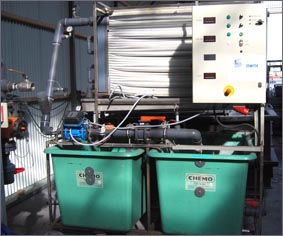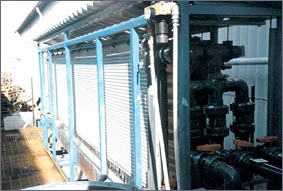

 |
|
|
|||||||||
|
|
|||||||||
|
|
 |
Clean technology for tanneries
International consumers and national governments are increasingly applying ever more stringent demands on producers to manufacture according to environmentally benign practices. A major proportion of the pollution generated in beamhouse processes can be avoided by adjusting floats and addition of chemicals for each process and by implementing, wherever possible, clean technologies. |
 |
 |
By using clean technologies, savings in chemical can be achieved, which enable short pay back of investment costs. A reduction in discharged pollution will allow the effluent treatment plant to be operated more economically, providing a better effluent quality.
W2O can provide for technical and practical advice on leather processing and equipment requirements for an extensive range of cleaner technologies as hair save, ammonia free de-liming and chrome recovery.
Chrome Recovery and Recycling
A proportion of pollution generated from leather manufacturing can be contributed to the inefficiency of chemical use in leather processing and to organic substances derived from the hides during processing. In particular, the overall tanning processes performed in drums can be |

Membrane pilot plant to test chrome recovery and polishing |
 |
 |
characterised by a high consumption of water and tanning agents, most of which are found in the final wastewater. To increase the efficiency of leather production, chromium is added in excess and is only partly taken up by the leather. Significant chromium savings can be achieved by applying modern chrome recovery and recycling technologies, thus reducing environmental impacts. |
 |
 |

Industrial scale Chrome recovery plant installed at a UK sheepskin tannery |
The novel chrome recycling process uses robust and easy maintainable microfiltration membranes. The porous Polyester cloth retains and concentrates alkaline chrome hydroxide, achieving chrome concentrations of up to 30 g/l Cr3+ and a volume reduction of up to 90 %. The highly concentrated chrome hydroxide can be then acidified with sulphuric acid and polished with the same membrane plant. Fats, proteins and fibres are retained and high quality chrome liquors are ready for re-use for tanning. W2O offers the following services for testing, design and support during implementation of novel chrome recovery and recycling plants: |
 |
 |
|
 |
 |
 |
|||||||||||